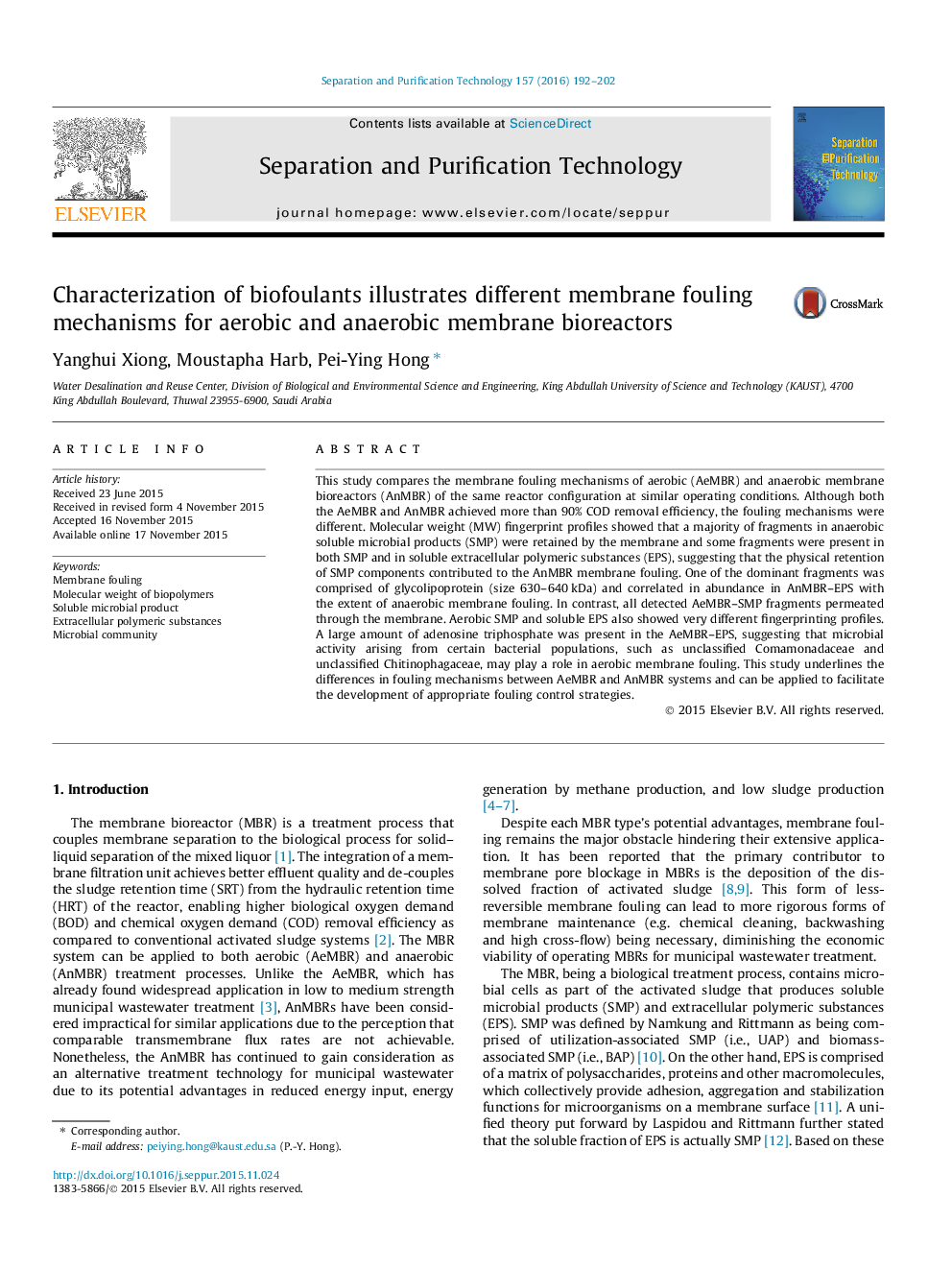| Article ID | Journal | Published Year | Pages | File Type |
|---|---|---|---|---|
| 640257 | Separation and Purification Technology | 2016 | 11 Pages |
Abstract
This study compares the membrane fouling mechanisms of aerobic (AeMBR) and anaerobic membrane bioreactors (AnMBR) of the same reactor configuration at similar operating conditions. Although both the AeMBR and AnMBR achieved more than 90% COD removal efficiency, the fouling mechanisms were different. Molecular weight (MW) fingerprint profiles showed that a majority of fragments in anaerobic soluble microbial products (SMP) were retained by the membrane and some fragments were present in both SMP and in soluble extracellular polymeric substances (EPS), suggesting that the physical retention of SMP components contributed to the AnMBR membrane fouling. One of the dominant fragments was comprised of glycolipoprotein (size 630-640Â kDa) and correlated in abundance in AnMBR-EPS with the extent of anaerobic membrane fouling. In contrast, all detected AeMBR-SMP fragments permeated through the membrane. Aerobic SMP and soluble EPS also showed very different fingerprinting profiles. A large amount of adenosine triphosphate was present in the AeMBR-EPS, suggesting that microbial activity arising from certain bacterial populations, such as unclassified Comamonadaceae and unclassified Chitinophagaceae, may play a role in aerobic membrane fouling. This study underlines the differences in fouling mechanisms between AeMBR and AnMBR systems and can be applied to facilitate the development of appropriate fouling control strategies.
Keywords
Related Topics
Physical Sciences and Engineering
Chemical Engineering
Filtration and Separation
Authors
Yanghui Xiong, Moustapha Harb, Pei-Ying Hong,
